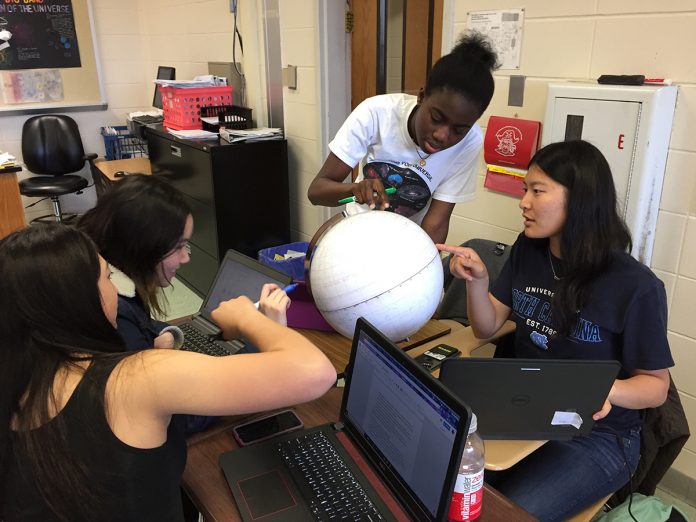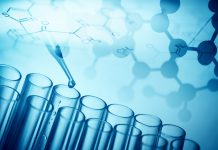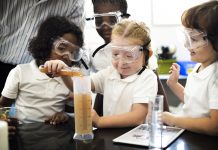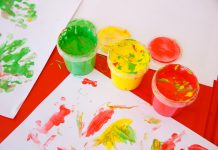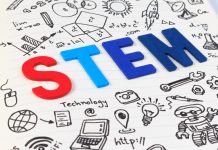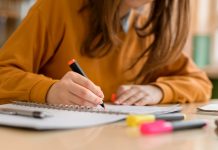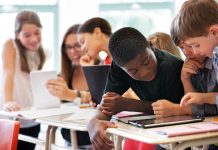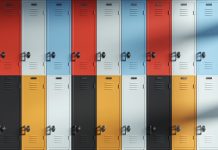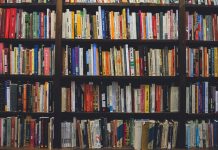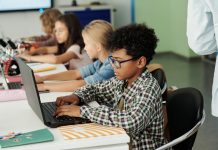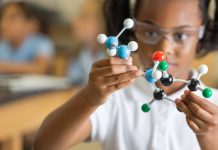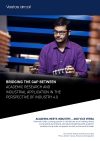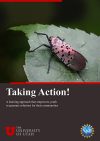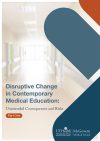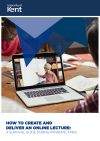Eugenia Etkina, Distinguished Professor of Science Education at Rutgers The State University of New Jersey, argues that interactive-engagement methods lead to better learning gains than traditional transmission-mode methods and discusses fundamental differences between various interactive engagement
In the past 20 years, the educational community has accumulated enough data to say with confidence that interactive engagement methods lead to better student learning gains than traditional transmission-mode methods (Michael, 2006; Freeman et al., 2014). As Mitchell Waldrop (2015) said: “At this point, it is unethical to teach in any other way.” But what is this way? There are many models of interactive engagement methods. One popular approach is the “flipped classroom” (Fulton, 2012) where the students read the textbook (or watch a video with the instructor explaining the material), then come to class and discuss what they read through answering questions posed by the instructor. They often work in pairs and participate in voting for the best answer.
An example of a flipped classroom in physics education is the method of Peer Instruction (Mazur, 1997). While the students in these classrooms work collaboratively answering questions and lecturing is limited, the knowledge that students begin with comes from authority. Students get acquainted with physics concepts by reading the book or watching a video with an authority figure on the screen. While such methods lead to more learning than traditional lecturing, what message about physics are they sending to the students? One answer is that science is an area of study that can be learned by reading the book and discussing what you read in class. Is this the message we want our students to get from our science classes?
Physics, chemistry, biology are experimental sciences. As the history of physics (Holton & Brush, 2001), the writing of physicists about their work (Born, 1943) and observations of this work in real time (Poklinek Cancula, Planinsic, & Etkina, 2015) show, the origin of every physics idea can be traced to experiments. The same is true for biology and chemistry. Sometimes an anomalous or interesting experimental result made scientists question what they observed. Then they (or somebody else) tried to explain and quantify the observed phenomenon. Multiple hypotheses were tested experimentally and those that were not ruled out remained and are now in the textbooks. When students start learning a concept by reading the textbook, they see the final outcome of this process not knowing where it came from. But maybe they learn where ideas come from by doing experiments in instructional laboratories? Research shows that this is not the case (Holmes, Olson, Thomas, & Wieman, 2017). Traditional labs that provide step-by-step instructions do not engage students in the development of new concepts, they mostly focus on the “verification of theory”.
But why drag our students through “discoveries” if they can quickly learn the right concept and practice applying it? This seems much more efficient and practical. However, it turns out, that being able to investigate phenomena, to cope with multiple solutions, to evaluate assumptions, to test different ideas are exactly the skills that will make our students successful in the future (OECD, 2018), not using the facts explained to them by somebody else. Future employers will need people who not only have disciplinary knowledge but also epistemic knowledge (how to “think like a mathematician, historian or scientist”) (OECD, 2018, p.5).
But how is it possible to create an environment in which students can “discover” and learn physics for themselves in ways similar to how physicists work—to own it, so to speak, within a reasonable time? An example of such an environment or an interactive method of teaching is the Investigative Science Learning Environment (ISLE) (Etkina & Van Heuvelen, 2007; Etkina, 2015). There are three key features of this approach, detailed below, which mirror the features of a scientific inquiry while at the same time allowing students to develop traditionally valued physics knowledge (normative concepts).
- Students develop normative physics concepts as their own ideas by repeatedly going through the following steps
(a) Observing pre-selected phenomena (experiments) and looking for patterns;
(b) Developing multiple explanations for these patterns;
(c) Using these explanations to make predictions about the outcomes of testing experiments that they design;
(d) Deciding if the outcomes of the testing experiments match the predictions;
(e) Revising the explanations if necessary, examining assumptions or going back to collect more observational data and;
(f) Applying tested and not ruled out explanations for practical purposes (building devices, determining the values of physical quantities, etc.).
- While engaged in steps (a) – (f) students represent physical processes in multiple ways, developing productive tools for qualitative reasoning and problem-solving.
- While engaged in steps (a) – (f) students work collaboratively in groups of 3-4 using small whiteboards and then share their findings, designs and solutions in a whole class discussion.
Only after all these steps the students read the textbook and compare the ideas that they have constructed on their own with the ideas presented in the book. The combination of these features applies to every conceptual unit in the ISLE learning system.
While it might seem impossible that the students can learn all of the general physics following the sequence outlined above our experience and the experience of many teachers across the world shows that it is. ISLE was originally developed by E. Etkina and later enriched through collaboration with A. Van Heuvelen, S. Brahmia, D.T. Brookes, G. Planinsic, X. Zou and many others. It is being used in high school and college classrooms and teacher preparation programmes. We developed a plethora of educational materials to help implement this approach, many of which are available on the Internet. In my next editorial, I will show several examples of knowledge construction following the ISLE process and share the resources available.
References
Born, M. (1943). Experiment and Theory in Physics. Cambridge: Cambridge University Press.
Etkina, E., & Van Heuvelen, A. (2007). Investigative Science Learning Environment–A Science Process Approach to Learning Physics. In E. F. Redish & P. J. Cooney (Eds.), Research-Based Reform of University Physics (Vol. 1). Retrieved from www.compadre.org/per/per_reviews/media/volume1/isle-2007.pdf
Etkina, E. (2015). Millikan award lecture: Students of physics – Listeners, observers, or collaborative participants in physics scientific practices? American Journal of Physics, 83(8), 669–679.
Etkina, E., Planinsic, G., & Van Heuvelen, A. (2019). College Physics: Explore and Apply (2nd ed.). San Francisco, CA: Pearson.
Freeman, S., Eddy, S. L., McDonough, M., Smith, M. K., Okoroafor, N., Jordt, H., & Wenderoth, M. P. (2014). Active learning increases student performance in science, engineering, and mathematics. Proceedings of the National Academy of Sciences, 111(23), 8410–8415.
Fulton, K. (2012). Upside Down and Inside Out: Flip Your Classroom to Improve Student Learning. Learning & Leading with Technology, 39(8), 12–17.
Holmes, N. G., Olson, J., Thomas, J. L., & Wieman, C. E. (2017). Value added or misattributed? A multi-institution study on the educational benefit of labs for reinforcing physics content. Physical Review Physics Education Research, 13, 010129.
Holton, S., & Brush, S. (2001). Physics, The Human Adventure. New Brunswick, New Jersey: Rutgers University Press.
Mazur, E. (1997). Peer Instruction: A User’s Manual. Upper Saddle River, NJ: Prentice Hall.
Michael, J. (2006). Where’s the evidence that active learning works? Advances in Physiology Education, 30(4), 159–167.
OECD. (2018). The future of education and skills Education 2030 – The future we want. OECD. Retrieved from https://www.oecd.org/education/2030/E2030%20Position%20Paper%20(05.04.2018).pdf
Poklinek Cancula, M., Planinsic, G., & Etkina, E. (2015). Analyzing patterns in experts’ approaches to solving experimental problems. American Journal of Physics, 83(4), 366–374.
Waldrop, M. M. (2015). The science of teaching science. Nature, 523(7560), 272–274.
Please note: This is a commercial profile
Eugenia Etkina
Distinguished Professor of
Science Education
Rutgers The State University of New Jersey, Graduate School of Education,
Department of Learning and Teaching
Tel: +1 831 295 2301
Eugenia.etkina@gse.rutgers.edu
https://gse.rutgers.edu/eugenia_etkina
http://www.islephysics.net/pt3/
https://sites.google.com/site/scientificabilities/
https://drive.google.com/file/d/0B5Al1VazSD5ac0RQajRsMlJDbm8/view?ts=59c27ac6
Editor's Recommended Articles
-
Must Read >> Investing in scientists of the future
-
Must Read >> Play-based learning to develop 21st Century Skills



